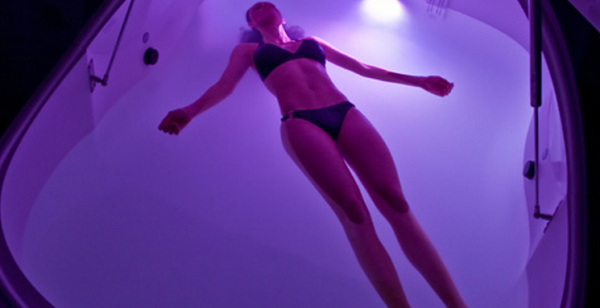Sunil Mantri: What is floatation ?
Mahendran Khedkar: Floatation also known as floating and float therapy, floatation involves lying in a salt-water solution in a specially designed tank. It is the most effective and incredible means of stress relief and relaxation available. Now widely accepted, floatation is also used to treat a wide range of ailments and conditions.
For many years, float tanks were used only by researchers in universities or by private individuals. But since 1983, floating has become increasingly popular as more has been learnt about floatation’s many positive effects
Sunil Mantri: How does floation work
Mahendran Khedkar: The floatation tank contains a super-saturated Epsom-salt solution, which is about 25cm deep. This creates an environment similar to that of the Dead Sea, which lets you float effortlessly on the surface of the water and enjoy a feeling of weightlessness!
The float tank looks like a large, enclosed bathtub. They are usually built from fibreglass and are designed to block out all external distractions, such as sights, sounds, tactile sensations and gravity.
The salt-water solution is heated to skin temperature (35.5°C). Once you are settled, it is almost impossible to tell which parts of your body are in the water and which aren’t. This will trick your brain into thinking that you’re floating in mid air.
The buoyancy created by the Epsom-salt solution effectively removes the effects of gravity on the body. This will make you feel almost completely weightless, letting every single muscle in your body fully relax.
With ear plugs in and (if you choose) the tank’s interior lights switched off, the quietness and darkness will allow your mind to drift into a deep state of relaxation.
Sunil Mantri: Is there any risk of drowning?
Mahendran Khedkar: The high buoyancy of the water makes it impossible for the individual to go beneath the surface. Once settled it is only possible to touch the bottom of the tank with a great deal of effort.
Sunil Mantri: Who uses float tank
Mahendran Khedkar: There is no such thing as a stereotypical float tank user. Our customers range from 16 to 80 years old, and come from a wide range of social and professional backgrounds.
Clients use the floatation tanks for many different purposes, including relaxation, getting rid of stress, pain relief and aiding recovering from injury. As a result, we are particularly popular with the following groups of people.
Athletes,Businessmen and women,Pregnant women,sufferers of pain and other ailments
Sunil Mantri: Why epsom-salt is used in flotation
Mahendran Khedkar: The type of salt that we use in our floatation tanks to give buoyancy to the water is called Epsom salt. It has been used for centuries for its medicinal qualities and continues to offer many health benefits when used for floating.Epsom salt was once the most popular medical drug in England. Its beneficial antiseptic and restorative qualities were not understood, but users knew that it was good for health and promoted a long life.
Sunil Mantri: What are Benefits of Floatation :
Mahendran Khedkar: Researchers and float tank users report many different beneficial effects from floatation, from general well-being through to mental and physical benefits. Here are just a few!
General well being :
Promotes total calm and peaceful relaxation
Eliminates fatigue and jet lag
Improves sleep
Alleviates stress (mental and physical)
Energises, rejuvenates and revitalises
Increases motivation, diminishes depression, anxiety and fear
Facilitates freedom from habits, phobias and addictions
Mental Benefits :
Stimulates left/right brain synchronisation
Shifts brain waves from beta to lower frequency alpha, theta and even delta
Creates mental clarity, alertness
Increases creativity, problem solving
Heightens visualisation
Deepens meditation
Expands awareness, intensifies acuteness of all the senses, accelerates learning
Enhances hypnotherapy and self-hypnosis
Physical Benefits :
Decreases the production of cortisol, ACTH, lactic acid and adrenaline
Increases production of endorphins
Speeds up rehabilitation and recovery
Relieves pain (arthritis, migraines, injuries and so on)
Boosts immune function
Improves circulation and distribution of oxygen and nutrients
Reduces blood pressure, pulse, heart rate and oxygen consumption
Improves athletic performance
Helps prevent sports injuries, speeds healing process
Sunil Mantri: Are there any side-effects?
Mahendran Khedkar: Not in the true sense of the word. Some first-time floaters can emerge from the tank feeling slightly nauseous. This is actually a good sign as it indicates that built-up stress is in fact leaving the body. We very rarely experience any cases of nausea in subsequent visits.
Sunil Mantri: How do you look for the future of Floaters in India
Mahendran Khedkar: India is a very young country, close to 70% of its population is between 18 to 30 years of age. The future of a strong India lies in the hands of this vibrant group. If this section of the population can be stress-free, a great deal of advancement and achievement can be had in a short span of time. We at ifloat india want to send a strong message of Total relaxation, that of Mind and Body, to help “India” become the true Super-power.





Leave a reply